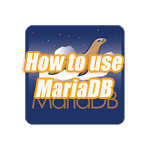 MariaDB is a fork of MySQL, which was created by Michael "Monty" Widenius. MySQL was acquired by Sun Microsystems in 2008, and then by Oracle in 2010. Widenius was concerned about Oracle's stewardship of MySQL, so he forked the project and created MariaDB.
MariaDB is a fork of MySQL, which was created by Michael "Monty" Widenius. MySQL was acquired by Sun Microsystems in 2008, and then by Oracle in 2010. Widenius was concerned about Oracle's stewardship of MySQL, so he forked the project and created MariaDB.
MariaDB is a drop-in replacement for MySQL, meaning that it can be used in place of MySQL with very few changes. MariaDB includes a number of features that are not available in MySQL, such as:
- Improved performance
- Enhanced security
- New storage engines
MariaDB is also a more active project than MySQL, with a larger community of developers and users.
The MariaDB project is governed by the MariaDB Foundation, which is a non-profit organization. The MariaDB Foundation is responsible for ensuring the long-term sustainability of the project.
MariaDB is a popular choice for a number of applications, including:
- Web applications
- Content management systems
- E-commerce platforms
MariaDB is a good choice for anyone who is looking for a high-performance, secure, and feature-rich database server.
Here are some additional details about the origin of MariaDB:
- The name MariaDB is a combination of the names of Widenius's daughters, My and Maria.
- The first version of MariaDB was released in 2009.
- MariaDB is currently the third most popular database server in the world, after MySQL and PostgreSQL.
If you do not know how to use MariaDB they have a great howto guide on their website:
https://mariadb.com/kb/en/mariadb/getting-started/








